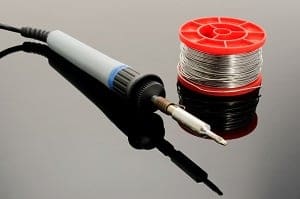
European Commission Publishes Recommended Text of RoHS Exemptions

 The European Commission published on 21 November 2018, eight renewals of existing exemptions and one new exemption in Annex III. These are for scrutiny by the European Parliament and Council and if there are no objections, they should be published early in 2019. These are:
The European Commission published on 21 November 2018, eight renewals of existing exemptions and one new exemption in Annex III. These are for scrutiny by the European Parliament and Council and if there are no objections, they should be published early in 2019. These are:
7cII “Lead in dielectric ceramic in capacitors for a rated voltage of 125 V AC or 250 V DC or higher”
7cIV “Lead in PZT based dielectric ceramic materials for capacitors which are part of integrated circuits or discrete semiconductors”
8b “Cadmium and its compounds in electrical contacts”. The scope has been limited to circuit breakers, thermal sensing controls, thermal motor protectors (excluding hermetic thermal motor protectors), AC switches rated at: 6 A and more at 250 V AC and more; or 12 A and more at 125 V AC and more, DC switches rated at 20 A and more at 18 V DC and more; and switches for use at voltage supply frequency ≥ 200 Hz”.
15 “Lead in solders to complete a viable electrical connection between semiconductor die and carrier within integrated circuit flip chip packages”, but the scope is limited to:
- a semiconductor technology node of 90 nm or larger;
- a single die of 300 mm2 or larger in any semiconductor technology node;
- stacked die packages with die of 300 mm2 or larger, or silicon interposers of 300 mm2 or larger.
18 “Lead as activator in the fluorescent powder (1% lead by weight or less) of discharge lamps when used as sun tanning lamps containing phosphors such as BSP (BaSi2O5:Pb)” (for categories 1 – 7 and 10) and new exemption 18b-I is limited to “when used in medical phototherapy equipment” and only for categories 5 and 8. Both are renewed until 21 July 2021.
21 This originally exempted lead and cadmium in printing inks on glass and the original wording continues for categories 8, 9 and 11. In addition, there are three new related exemptions split into three sub-parts:
- 21(a) Cadmium when used in colour printed glass to provide filtering functions, used as a component in lighting applications installed in displays and control panels of EEE;
- 21(b) Cadmium in printing inks for the application of enamels on glasses, such as borosilicate and soda lime glasses;
- 21(c) Lead in printing inks for the application of enamels on other than borosilicate glasses.
29 “Lead bound in crystal glass as defined in Annex I (Categories 1, 2, 3 and 4) of Council Directive 69/493/EEC”.
37 “Lead in the plating layer of high voltage diodes on the basis of a zinc borate glass body”.
7cII, 7cIV, 8b, 15, 18, 21, 29 and 37 will all expire on 21 July 2021 for categories 1 – 7 and 10, unless renewed. This is the date recommended by Öko and is not the maximum permitted validity period of five years from the date of the Commission’s Delegated Act. If manufacturers want these to be renewed, they will have to submit renewal requests before 21 January 2020 (18 months before expiry) to guarantee continued validity until the next Commission Decision is published.
New exemption 42 is “Lead in bearings and bushes of diesel or gaseous fuel powered internal combustion engines applied in non-road professional use equipment:
- with engine total displacement ≥ 15 litres; or
- with engine total displacement < 15 litres and the engine is designed to operate in applications where the time between signal to start and full load is required to be less than 10 seconds; or regular maintenance is typically performed in a harsh and dirty outdoor environment, such as mining, construction, and agriculture applications.
New exemption 42 is applicable only to Category 11 and excludes applications that are already covered by exemption 6c. It will expire 21 July 2024, unless renewed.
Overall, these renewed exemptions and new exemption 42 are as recommended by the Öko Institut, although some simplifications were made to some exemptions’ wording. Still outstanding are the lamp exemptions 1 – 5 where renewals were requested and exemption 32 (proposed by the Commission for renewal in February 2018).
If you would like to find out how you can stay on top of regulatory issues related to hazardous materials and substances, sign up to our newsletter here.








